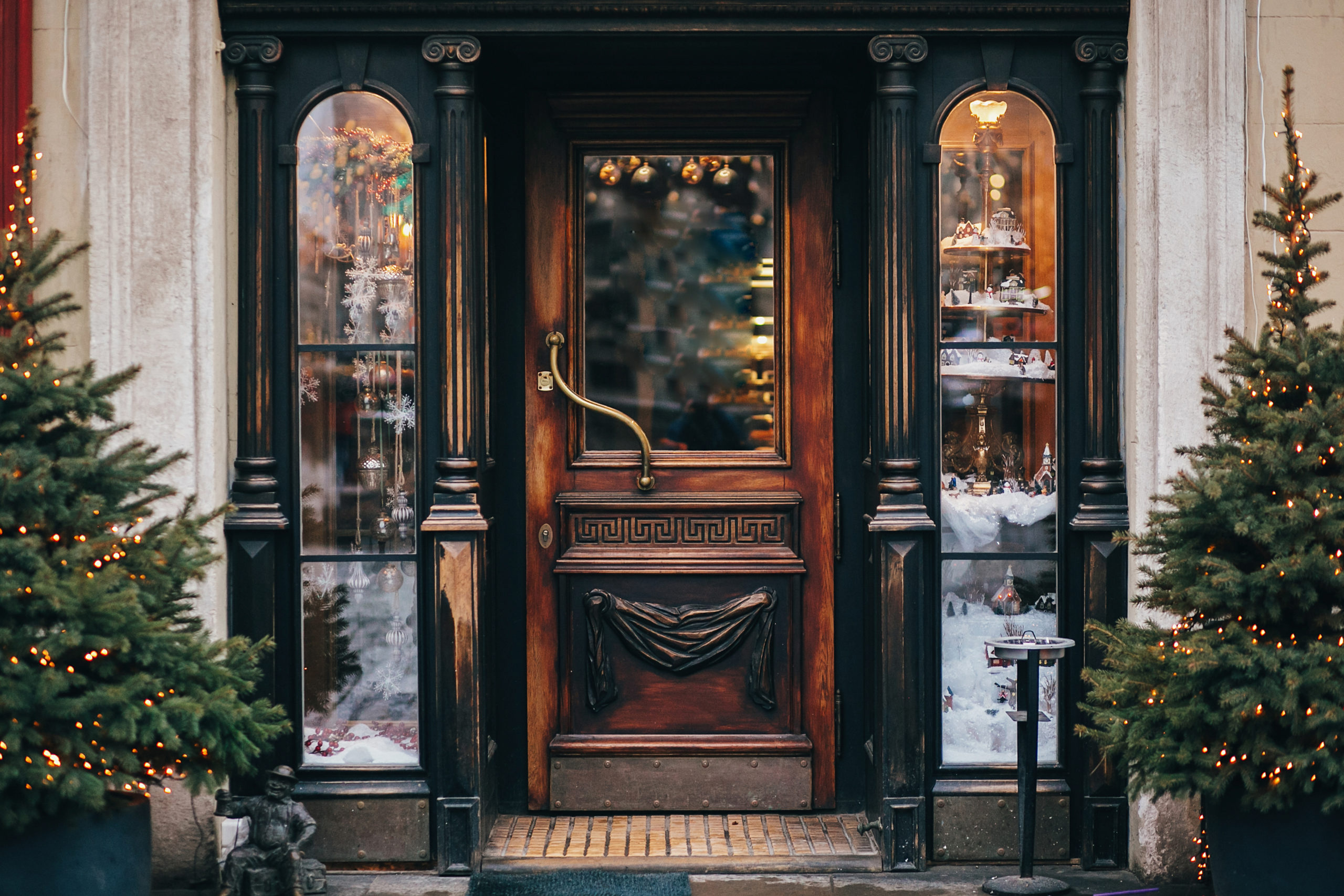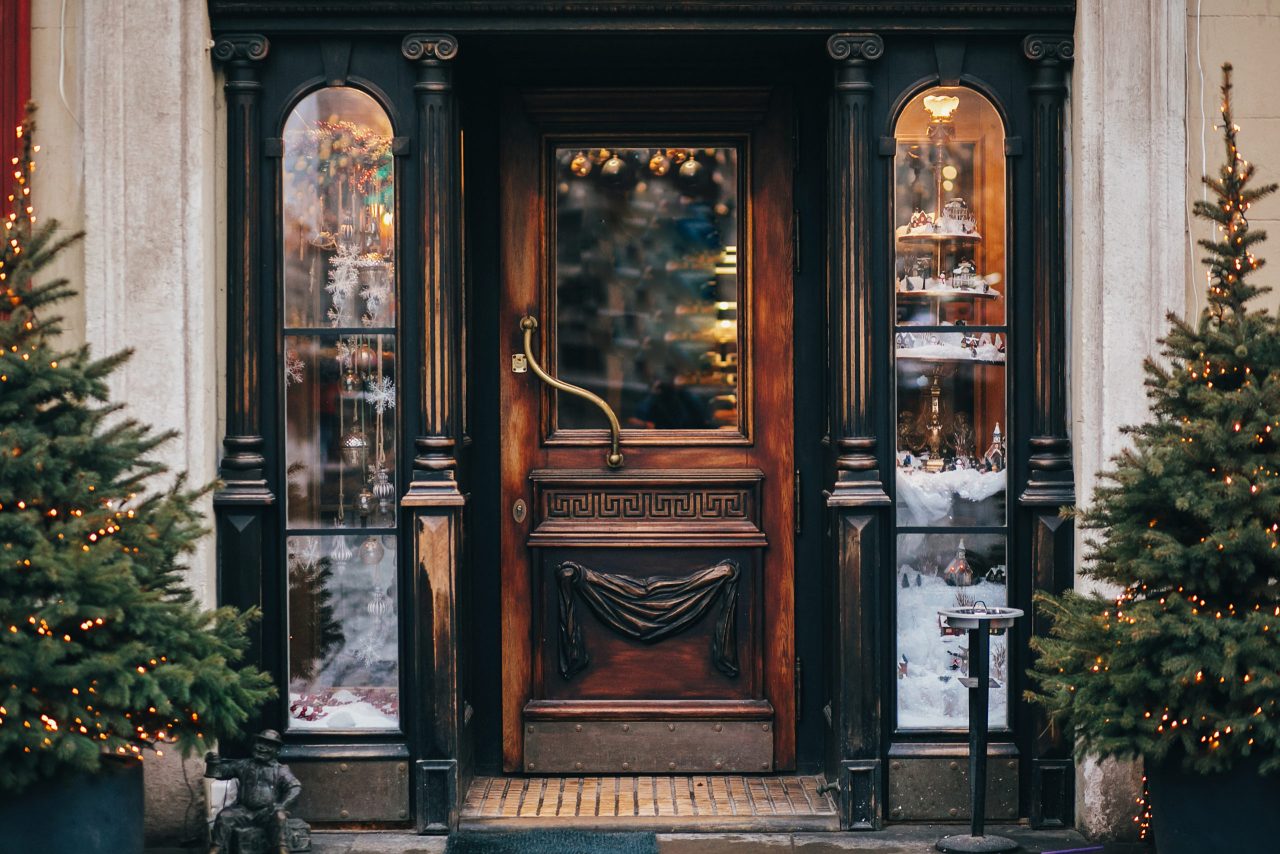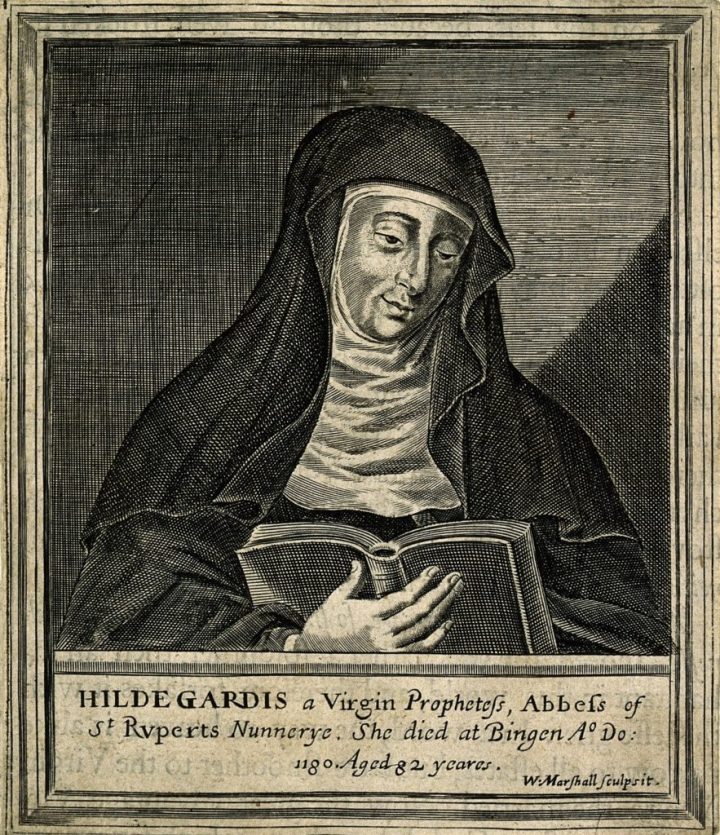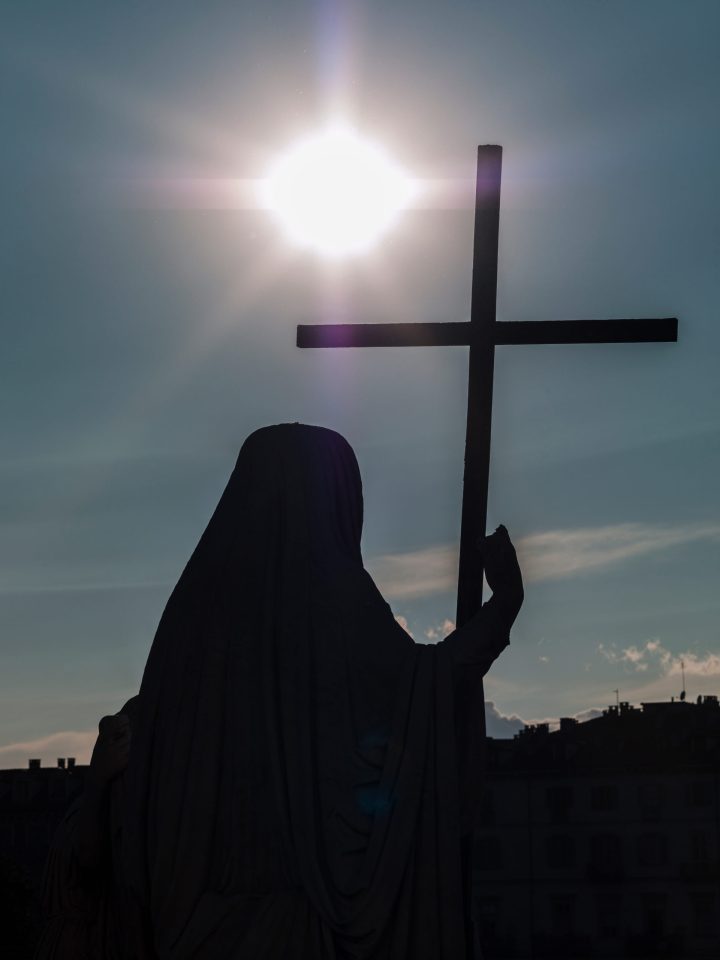
Without presuming to speak for the human race, but claiming what authority membership bestows, let it be said that there is no time when people are more susceptible to otherworldly interactions than at Christmas time. Marking the greatest spiritual advent in history, the aura and traditions of Christmas have been alive with ghosts ever since—making Mr. Chesterton’s “The Shop of Ghosts” most welcome as a warm yet shivering parable about Christmas spirits.
By
contrast to the other seasons, Christmas is the most merrily haunted season,
and it is in this contrast that Christmas must be appreciated. Appreciation for
anything is best acquired through appreciable experience of its opposite. It is
the man who comes in from the cold blast who is most blessed by the fire’s heat.
The merits of any feast are augmented by the memory of a fast. The precious
miracle of life is reinforced by the somber sense of death. Such extremes
define the margins of Christmas, which has ever dwelt upon diametric
compliments, such as winter and warmth, the homeless and the homestead, peasants
and kings, life and death, God and man. It is in the spirit of these paradoxes
that the Prince of Paradox, Gilbert Keith Chesterton, tells his strange
Christmas ghost story showing that the immortality of Christmas is a miracle
because it is dying.
Like
any Christmas story worth its salt, “The Shop of Ghosts” features a moment that
makes every reader that has once been a child a child once again in its
description of a toy shop window. It is a longing that is all but lost in the
current culture, and its loss has taken some of the innocence of the world with
it. One is hard pressed to find these days that charming cluster of awe and
delight, of children’s noses pressed hard against the frosty glass of a toy
shop window, peering in at a dancing display of living fantasy. Grownups forget
how playthings take on a real life to those not yet grown up, and it is good to recall the companions of wood, metal, and
plastics that made the quiet, terrible corners of childhood fraught with drama
and discovery.
The
gentleman in Chesterton’s story (presumably Chesterton himself), enters “a very
small and dimly-lit toy shop in one of the greyest and leanest of the streets
of Battersea” after admiring the exotic wonders in its window with the eyes of
a child. Inside the dingy shop, he finds an old man with wild white hair who
seems peacefully drowsy and ill. When the old man refuses money for some wooden
soldiers, he explains that he has always given presents. The customer suddenly
realizes that he is in the presence of Father Christmas himself. Asking after
his health, Father Christmas matter-of-factly informs his patron that he is
dying.
“All
the new people have left my shop. I cannot understand it. They seem to object
to me on such curious and inconsistent sort of grounds, these scientific men,
and these innovators. They say that I give people superstitions and make them
too visionary; they say I give people sausages and make them too coarse. They
say my heavenly parts are too heavenly; they say my earthly parts are too
earthly; I don’t know what they want, I’m sure. How can heavenly things be too
heavenly, or earthly things too earthly? How can one be too good, or too jolly?
I don’t understand. But I understand one thing well enough. These modern people
are living and I am dead.”
It is then, with the news that Father Christmas is disregarded and dying, that the shop suddenly becomes crowded with the dead, with the ghosts of patriots and poets who kept the generous spirit of Christmas sacred in their lives—Robin Hood, Ben Jonson, Sir Richard Steele—their faces flitting among the dusty shelves of beautiful toys, happy to see Father Christmas, while acknowledging that he has ever been dying over the ages, for as long as any of them have known him—ever since he was born, in fact. They muse on the decline of Father Christmas together in that neglected toy shop relegated to obscurity by the cosmopolitan industry and efficiency, when suddenly, the ghost of Charles Dickens takes off his hat “with a flourish like a man calling a mob to rise” and proclaims that Father Christmas will never die.
Christmas
is eternal though its traditions fail, though its true meaning fades, though its
reality is ever dying under the attack of secular forces. But Christmas will
never die no matter how much it succumbs to banishment and forgetfulness.
Father Christmas, or Santa Claus, will always live and never die as the eternal
Spirit of Christmas, as the quiet ghost that will ever haunt every chimney
corner on Christmas Eve until doomsday. Though many Catholic parents reject Santa
Claus as a lie, relinquishing their traditional league famously described by
Clement C. Moore’s 1823 poem “A Visit from St. Nicholas,” Santa Claus is worth
believing in because he is a symbol of a truth that never dies. Santa Claus
represents those unseen powers that are a part of life and always will be—the
most important part of life, in fact. Unfortunately, it is not unusual for
Catholic parents not to “do” Santa Claus with their children on account of the
overwhelmingly earthward shift in the paradigms of the modern Christmas season.
Those things that the world parodies and perverts, however, are very often the
very things worth protecting and perfecting.
Christmas
morning is the time to awake to common sense as well as uncommon miracles
performed by unseen powers that animate the world. The Incarnation fused two
realities together in a fresh and fantastic way, and the wisdom of the ages
incarnates this truth with fireside tales that recall the elfish business at
work in the world, the joyful work of heaven on earth. Ghost stories are
ordinary enough, but in the context of Christmas they become increasingly
poignant as they allude to the truth that the supernatural is content to mingle
with the natural. And so, though Christmas may be dying, it will never die.In his famous 1897 response to
eight-year-old Virginia O’Hanlon, New York Sun editor Francis P. Church
wrote, in the most reprinted newspaper editorial in the English language: “No
Santa Claus? Thank God he lives and he lives forever. A thousand years from
now, maybe 10 times 10,000 years from now, he will continue to make glad the
hearts of children.”
Ghostly
Christmas tales and reflections like “The Shop of Ghosts” jolt the world out of
its mortal preoccupations, replacing holiday consumerism with a holy-day
humanitarianism and the spirits that inspire it. Like Chesterton’s haunted toy
shop, the indigenous Christmas abounds with ghosts, illustrating the
Christmastide theme of the interplay of the worlds of men and gods and ghosts.
As is often the case, people have to believe in ghosts before they can believe
in God, for ghosts, and the rest of their kind, represent invisible powers of
tremendous consequence that move among men, conjoining the secular to the
sacred in a wholesome and humane balance. And though men may cease to believe,
the ghosts will never die.




